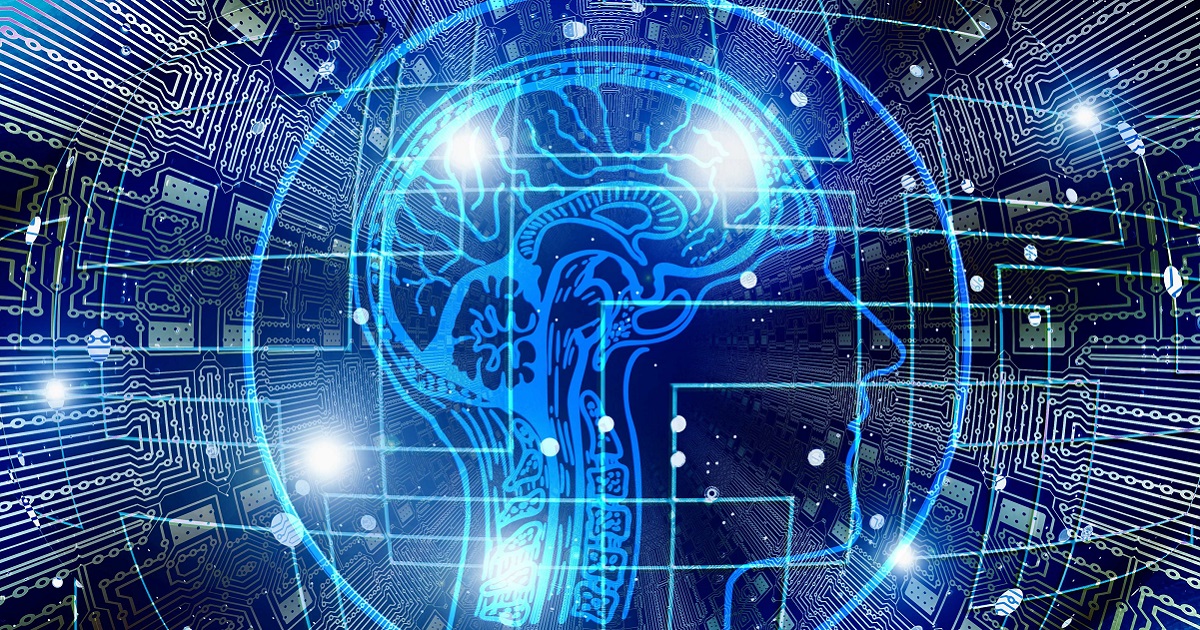4IR: Benefits and Challenges
Prior to the 9th WIEF Global Discourse on 4IR, one of its panel speakers, vice president of BD4IR Syed Tamjid ur Rahman, gives an overview as well as developments brought on by the 4IR that will benefit all levels of society, especially in Bangladesh with its Digital Bangladesh aim.
‘A technological revolution is a period in which one or more technologies is replaced by another technology in a short amount of time. It’s an era of accelerated technological progress characterised by new innovations whose rapid application and diffusion cause an abrupt change in society,’ explains Syed Tamjid ur Rahman, Vice President of Bangladesh Center for Fourth Industrial Revolution (BD4IR). ‘The need for replacement time will be accelerated by the fusion and synergistic effect of the technologies. Therefore, it would be very difficult to predict the length of time. However, we would probably see a different world order after the completion of the UN Sustainable Development Goals.’
Syed Tamjid’s one of the speakers for the 9th WIEF Global Discourse on 4IR happening on the 30 October 2019 in Dhaka and here he elaborates on developments made possible by the era of the Fourth Industrial Revolution.
What significant developments will influence the 4IR in the next five years?
Broadly speaking, data and devises are the two key drivers that’ll give the Fourth Industrial Revolution (4IR) an exponential leap in the next five years. 5G, or in other words connectivity, will continue to play the catalytic role. The digital transformation will demand unprecedented scale of connectivity, ability to compute, store and process massive scale of data in real-time.
How do developments during the 4IR advance marginalised communities?
4IR is likely to trigger inequalities across economies due to digital and technology divide. The slow process of up-skilling people to work with the new and advanced technologies will affect the communities. However, any community that can quickly master the new technologies can have a competitive edge. This will obviously demand the ability to predict the technological advancement; a relatively shorter reaction time to embrace new technologies, new and advance teaching system for learning new technologies. Adoption of new technology will increase productivity, reduce cost, reduce defects and improve competitiveness.
The digital media has been increasingly becoming the primary driver of many marginalised and backward or underserved communities and markets. These technologies are redefining our relationships, our knowledge, connecting with people and groups in new ways, fostering friendships and creating new interest groups, even transforming the traditional business and trade practices. So, 4IR will contribute the advancement of the communities. However, the policy makers will have to ensure that the technology advancements are inclusive and integrate marginalised people, especially women, effectively.
What are the significant benefits small businesses have garnered from developments during the 4IR in the past three years?
SMEs are neither sufficiently knowledgeable nor prepared for the 4IR. Majority of the SMEs either can’t afford to spend a lot of time, effort and money on installing [for example] robots, or are often reluctant to invest in advance technologies. However, smart entrepreneurs are investing in intelligent vending machines, intelligent sorting, grading and packaging machines to enhance their productivity. SMEs have also been active in important areas of waste recycle, renewable energy, bio-technology, farm productivity, etc.
How has technological advancements during the 4IR benefitted women in the past three years?
Advancing gender equality is crucial to ensure a sustainable future since women account for just over half of the world’s working-age population. We’re already seeing more negative impact of 4IR on women since majority of the jobs that are rapidly being lost to automation are usually carried by women. Women are underrepresented especially in engineering and technology careers that are most expected to grow and benefit most from the 4IR. Women and small enterprises can significantly benefit from e-commerce, mobile banking and 3D printing to produce as well as deliver specialised products to the customer.
How advanced is Bangladesh in terms of technological development and usage, compared to another country in the region?
4IR and Bangladesh Business 4IR knowledge – applications – tools promise to help address some of the intricate development challenges in Bangladesh such as agricultural, climate change, health and education. Many 4IR works are currently initiated at a very primary stage through the ‘Digital Bangladesh’ process. To move further and accelerate the process, it’s important that line ministries of the government, politics, business, industry, academics and researchers join hands to develop a synergy to address the unprecedented change, and prepare, as well as align production, management and governance systems in Bangladesh to help protect the society.
We’re also happy to see the leadership and vision of our Honourable Prime Minister Sheikh Hasina, in addressing the challenges and opportunities of 4IR from the Bangladesh context in different national, regional and international forums. Especially at the WEF Annual Meeting in Davos. Her active engagement, reflections and attention will help us move forward in a more effective way for businesses and industries.
According to Bangladesh Telecommunication Regulatory Commission (BTRC), the total number of mobile phone subscribers [in Bangladesh] has reached 162,583 million at the end of August, 2019. The telecom regulator has started its initial preparations for awarding licences to carriers for 5G mobile data service in 2020. The infrastructure and supplier company Huawei advised to implement 5G service in Bangladesh in three phases.
From 2020 to 2021, 4G and 5G will be home broadband in 50 per cent of the city’s high-value area. During that time, the download speed will be 100Mbps and uplink 5Mbps. Bangladesh will enjoy enterprise internet access system from 2022 to 2002 in the second phase. In this period, the high traffic areas of the internet will be affordable for 5G-enabled handsets. The download speed will be 300MBps, upload will be 50Mbps. The third step would be taken in 2025. In that phase, the ecosystem will come under broadband, ensuring 100Mbps coverage everywhere. The download speed will be 10GB, payload 100Mbps.
How is Bangladesh taking advantage of the developments during the 4IR?
Bangladesh is assessing the opportunities, challenges and risks of the 4IR and its associated technologies in a number of sectors. For example, in healthcare systems particularly in the rural and remote areas, 4IR digital technologies have the ability to improve telemedicine, including tactile internet capabilities, better preventive medicine that can use always-on remote sensors and wearables, remote surgery and ‘smart’ instruments all will be made possible because of the speed and latency capabilities enabled by the mmWave spectrum.
Next-generation robots, remote object manipulation (controlling machines with precision at distances), drones and other real time control applications in digitised industrial centres are expected to increase efficiency, reduce costs and improve safety as well as lead to innovations in products and processes. In autonomous transport, 5G mmWave is expected to enable driverless vehicles to continuously communicate with each other, the cloud, and the physical environment to create highly efficient public transport networks.
We need to think of an approach that can help Bangladesh in learning, encourage critical thinking, be innovative and reskill our country. We need to develop as well as apply 4IR tools and knowledge to further the sustainable development, in line with 75-year plans, delta plan 2100 and other national as well as sectoral priorities. We’re happy to see that Bangladesh has been playing an active role within a number of WIEF activities. In the 2018 Election Manifesto, the political party of Honourable Prime Minister Sheikh Hasina party had included prioritising IT and ensure that Bangladesh has full 5G bandwidth coverage between 2021 and 2023.
What are the challenges born within the 4IR era?
Emerging technologies are swiftly changing lives and transforming businesses and societies, inevitably posing new risks and raising ethical concerns. We’ll explore our shift from a world order based on common values to a ‘multi-conceptual’ world shaped by competing narratives seeking to create a new global architecture.
With the advent of the 4IR, countries and companies have an opportunity to counter and potentially reverse the slowdown in productivity by diffusing and adopting technology at scale. In fast evolving and converging technologies for production, accelerated growth and maturity are occurring like never before. The latest developments of IoT allow for connecting and tracking asset performance in real time, as well as for integrating production and consumption processes.
AI, since 2015 has achieved image and speech recognition at the level of the human brain, can process large amounts of data that factories collect to increase efficiencies and inform accurate decision-making. Advanced robots and computers can perform a range of routine physical activities and increasingly accomplish activities requiring cognitive capabilities, such as tacit judgements or sensing emotions. According to McKinsey Global Institute, more than 60 per cent of all manufacturing activities can be automated with current automation technology.
These changes are driving the world towards a future of production characterised by autonomous, self-organising factories and integrated or hyperconnected production systems. Manufacturing companies, suppliers and customers will ultimately be connected on a common IoT platform. Technology will empower the factory worker and plant manager, with a third of tasks almost fully automated, thus shifting the focus from execution of repetitive and inefficient tasks to innovation. Technologies of the Fourth Industrial Revolution will generate inclusive growth and bring benefits beyond the factory’s four walls. They will potentially deliver up toUSD3.7 trillion in value for the global economy, offering new products and services to society and supporting the environment by optimising resource consumption.
While several pioneering companies and early adopters in Bangladesh praise technology’s positive impact, adoption remains slow and limited across diversified industry sectors. Only a few of the industrial companies are either at the start of the journey or unable to comprehend the impact on their sectors.
What do you think will shape the next industrial revolution?
The key catalysts of the 4IR are 5G and AI. AI will continue to dominate the next revolutions. However, humans will play a critical role, in addition to AI, in shaping the next industrial revolution.

What can participants expect from you during the WIEF Global Discourse session in Dhaka?
I think with a very short exposure to an extremely phenomenal issue, it would be more of an eye-opener, food for thought and developing curiosity to learn more about 4IR and get into a ‘being prepared’ mode. It’ll be a quick but an important overview of the key elements of 4IR: AI, robotics, autonomous factories, manufacturing process, blockchain based digital financial society, education focusing on STEM and collaborative learning and assessment.
WIEF Foundation’s 9th WIEF Global Discourse focuses on 4IR: Seizing Possibilities for the Future and will be held in Dhaka, Bangladesh, on 30 October 2019. To register as a participant, visit this link.
Also read more on 4IR here.
Main photo by Gerd Altmann from Pixabay.



